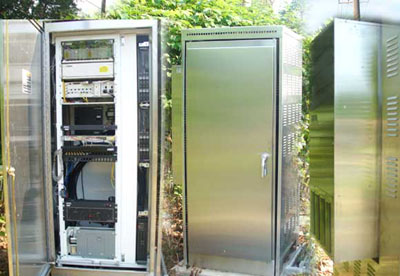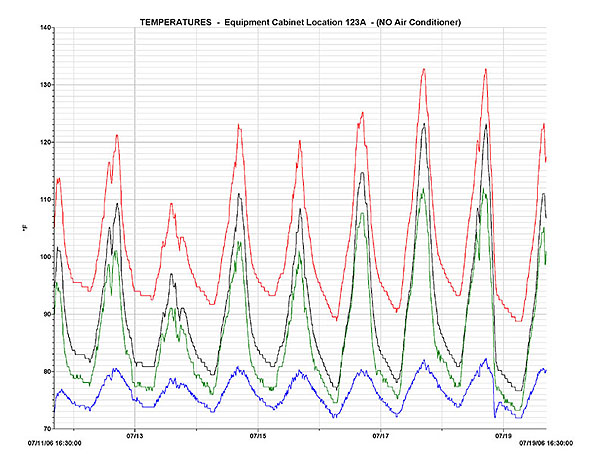Climate Controlled Outdoor Cabinets for Communications Systems
Welcome to the July 2008 issue of GL's consulting newsletter. In this issue, we focus on climate controlled outdoor cabinets that house telecommunications systems.

Climate controlled outdoor equipment cabinets play an important role in insuring reliable and quality communications links. Outdoor cabinets that house today's modern communications systems are very different from their earlier versions. Present-day cabinets are home to a number of state-of-the-art electronic systems and components used for public communications, intelligent transportation systems, CCTV surveillance, and other equipment related to homeland security for transit and public safety requirements. The electronic systems include computers and servers consisting of microprocessors, fiber optic devices, Ethernet routers and switches, uninterrupted power supply units, and other semiconductor components. They are very susceptible to high temperatures and high humidity. Overheating and condensation would shorten their life expectancies and cause major failures. Hence, they require an environment controlled for heat and humidity for proper functioning.
GL's Study
Temperatures inside an outdoor cabinet can vary widely depending on the season and the location. GL conducted a detailed study of the environment inside a typical cabinet housing a server and a few active fiber optic components. The study showed that temperatures near sensitive systems can easily rise above 130°F in summer months, when the outside air temperature hovers in the 90s (°F) (as indicated by the red line in Figure 1 below). Using the information gathered during the study, along with our extensive knowledge and experience, GL's engineers have designed and specified suitable climate controlled outdoor cabinets for our customers.

Temperatures at various points inside a cabinet without climate control
Technology
Two basic technologies are available for cooling an outdoor cabinet, a passive 'heat exchanger', or active (Freon-compressor type) air conditioning. This is apart from the traditional fan or blowers used in some cases. A passive heat exchanger consists of a fluid-filled 'heat pipe' assembly. Typically, passive heat exchanger units are only good for very minor cooling tasks (around 600 BTU or less) with very little heat producing equipment inside the cabinet, and in very moderate climates. Even with minimal equipment installed in a cabinet, a 600 BTU 'heat exchanger' would not come close to cooling adequately when outside temperatures reach 80°F or more. Active air conditioning becomes a must for anything more than that.
Factors to Consider
Whoever said designing a communications cabinet was easy and a low tech job? Designing a modern-day communications cabinet is complex and requires extensive knowledge and experience. Some factors that go into design considerations are:
|
|
GL's Solution
GL's experts studied the environmental conditions inside the cabinets and leveraged their experience to design and specify climate controlled outdoor cabinets. Our solution has led to a more controlled environment inside the cabinet. It has, in turn, insured that our customers' telecommunications links continue to be highly reliable even under adverse weather conditions. Click here for more information.
 Back to Consulting Services Newsletters Page
Back to Consulting Services Newsletters Page